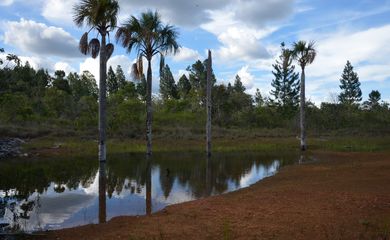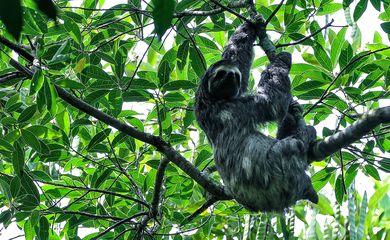Environmental challenge: Preserving Brazil’s cerrado

The cerrado is the second-largest of Brazil’s six biomes and the most direly threatened. It has lost over half of its original coverage and faces major challenges including the establishment of conservation units, the sustainable use of natural resources, the preservation of watersheds, the prevention and combat of forest fires, and monitoring.

Stretching across 14 states and the Federal District, the cerrado is home to over 130 thousand springs, which makes it one of the country’s main water sources. Eight of Brazil’s 12 watersheds originate in the cerrado.
According to Professor Isabel Belloni Schmidt from the Department of Ecology at the University of Brasília, the biome is Brazil’s water tank. “The cerrado is a vital water producer. The water from the cerrado—not only in the Federal District but also in many other locations across Brazil—is crucial. When we disregard the existence of the cerrado and attempt to replace it, we are essentially wasting water. We’re failing to produce water.”
Preservation
The Cafuringa Environmental Protection Area, located northwest of the Federal District, is known as the region’s last green frontier. Established in 1988, the protection area stands out for its natural beauty, which features plateaus, forests, and fields where springs give rise to rivers, streams, rapids, and absolutely breathtaking waterfalls. It serves as a model for cerrado conservation, with initiatives ranging from the reintroduction of trafficked animals back into their natural habitat to sustainable eco-villages and voluntary fire brigades.
Pedro Braga, auditor at the Brasília Environmental Institute (Ibram), explains that the region, home to 120 waterfalls and bathing pools, remains well-preserved largely due to its rugged terrain. “It’s what we call the Federal District’s ‘sea of hills.’ It’s a plateau that outlines the entire region, dropping from 1,300 to 800 meters. This 500-meter elevation difference generates a number of waterfalls and rapids. Cafuringa’s geographical features are no short of incredible.”
Reuber Brandão, biologist and professor at the University of Brasília (UnB) and member of the Conservation Experts Network, pointed out that the area also exhibits Amazon properties.
“You have forests with a bio-geographic connection, an exchange of organisms with biomes farther north. As a result, you find species of amphibians, snakes, butterflies, and various more typically Amazonian organisms than, for example, the fauna found in the higher regions within the Central Plateau,” he remarked.



